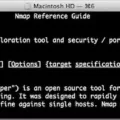Installing Jupyter Notebook on a Mac can be a great way to build skills in data science and programming. Jupyter Notebook is an open-source web application that alows users to create and share documents that contain live code, equations, visualizations, and narrative text. It is a powerful tool for interactive computing and data analysis.
To get started with Jupyter Notebook on your Mac, you’ll need to install the prerequisite software before you can begin uing it. Here are the steps for how to install Jupyter Notebook on a Mac:
1. Install Homebrew
The first step is to install Homebrew, which is a package manager for macOS that makes it easier to install different software packages. To do this, open up the Terminal app and type in “/usr/bin/ruby -e “$(curl -fsSL https://raw.githubusercontent.com/Homebrew/install/master/install)” followed by pressing enter.
2. Install Python 3
Once Homebrew is installed, you can use it to install Python 3 with the command “brew install python3” folowed by pressing enter. This will make sure that all of the necessary components for running Python are installed on your computer before you begin installing Jupyter Notebook.
3. Install pip3
Pip3 is a package manager for Python 3 that makes it easier to download and manage software packages written in Python 3 code. To install pip3, enter “pip3 install –user –upgrade pip setuptools wheel” followed by pressing enter in the Terminal window. This will download the necessary files needed to run pip3 commands on your computer.
4. Install Jupyter Notebook
Once pip3 has been installed, you can use it to download and install Jupyter Notebook with the command “pip3 install jupyter” followed by pressing enter in the Terminal window. This will download all of the necessary files needed for running Jupyter Notebook on your computer.
5. Launch Jupyter Notebook
Once everything has been installed successfully, you can launch Jupyter Notebook with the command “jupyter notebook” fllowed by pressing enter in the Terminal window or Finder window (if Finder is set as your default application). This will open up a new browser tab or window with the home page of Jupyter Notebook where you can start creating notebooks and working with data!

And there you have it – five easy steps for how to install Jupyter Notebook on a Mac! With this powerful tool at your fingertips, you’ll be able to create documents that contain live code and visualizations as well as narrative text so that you can share your work with colleagues or post them online easily!
Installing Jupyter Notebook on Mac
Installing Jupyter Notebook on MacOS is relatively straightforward. First, you will need to install the latest version of Python3 on your Mac. Once this is done, you can check if pip3 and python3 have been correctly installed by running ‘python3 –version’ and ‘pip3 –version’ in your terminal. After that, it is recommended to upgrade your pip to make sure that you don’t encounter any errors during installation. Finally, enter the following command in your terminal to install Jupyter Notebook using pip3: ‘pip3 install jupyter’. You should now be able to launch Jupyter Notebook from the command line by entering ‘jupyter notebook’ into the terminal.
Using Jupyter on a Mac Computer
Yes, there is a Jupyter app for Mac. The app can be installed with a one-click installer that is available on the official JupyterLab website. The app is compatible with macOS systems and provdes a powerful environment for interactive data science and scientific computing. It includes all of the core Jupyter components such as Notebook, Terminal, Text Editor and File Browser, plus additional features such as interactive widgets, data visualization tools, code consoles and more. With the Jupyter app for Mac, you can easily create and share documents that contain live code, equations, visualizations and narrative text.
Installing Jupyter Notebook
Installing Jupyter Notebook is easy! First, you’ll need to download the Anaconda distribution of Python 3. We recommend downloading the latest version (currently Python 3.9). Once you’ve downloaded it, simply follow the instructions on the download page to install Anaconda. Once installation is complete, you will have installed Jupyter Notebook! To run it, open up your terminal or command prompt and type in ‘jupyter notebook’. This should open a new tab in your default web browser with the Jupyter Notebook dashboard. From there, you can create and open notebooks, or manage running kernels. Congratulations – you’ve successfully installed Jupyter Notebook!
Installing Jupyter Notebook Using Anaconda
Installing Jupyter Notebook with Anaconda is a quick and easy process. First, launch Anaconda Navigator, then click on the “Install” button next to the Jupyter Notebook package. This will begin the installation process, whih includes loading packages needed to run the notebook. Once these packages are loaded, you will be presented with a notification that the installation has been completed. Congratulations! You have now successfully installed Jupyter Notebook through Anaconda!
Checking if Jupyter Notebook is Installed on Mac
If you want to check if Jupyter Notebook is installed on your Mac, follow these steps:
1. Open up your Terminal by holding Command and hitting Space, which should bring up your Spotlight Search.
2. In your Terminal, type jupyter notebook and hit Return.
3. If a browser window opens with the Jupyter Notebook dashboard, then it means Jupyter Notebook is installed on your Mac.
4. If you get an error message or nothing happens, then it means Jupyter Notebook is not installed on your Mac.

Source: blog.roboflow.com
Running JupyterLab on a Mac
Running JupyterLab on a Mac is a straightforward process that requires the installation of Miniconda, creating a virtual environment for JupyterLab, and generating the Jupyter Lab configuration file. Here are the steps you need to follow:
1. Install Miniconda for Mac by usig Homebrew with the command “brew install miniconda”.
2. Create a virtual environment for JupyterLab by using the command “conda create –name jupyterlab python=3.7”.
3. Activate your new environment by typing “conda activate jupyterlab” into your terminal window.
4. Install JupyterLab in your new environment with the command “conda install -c conda-forge jupyterlab”.
5. Generate the Jupyter Lab configuration file using the command “jupyter lab –generate-config” in your terminal window.
6. Create a shell script to launch Jupyter as a service by typing “vim /usr/local/bin/jupyterserver” into your terminal window and copying and pasting this code:
#!/bin/sh
export PATH=”$PATH:/usr/local/miniconda3″
source /usr/local/miniconda3/etc/profile.d/conda-env-variables
conda activate jupyterlab
jupyter lab –config=/Users/$USER/.jupyter/jupyer_config.py $@ >> /var/logs/$USER-jpyer-server 2>&1 &
7. Make sure that your shell script is executable with this command: “sudo chmod +x /usr/local/bin/jupyerserver”
8. Run Jupyer Lab as a service with this command: “sudo launchctl load -w /Library/LaunchDaemons//com..JupiterServer..plist”
9 (optional). To build a desktop app with Nativefier, use this command: nativefier –name “JupiterLab” http://localhost:8888
Once all of thse steps are completed, you should be able to open and run JupiterLab on your Mac!
Installing Python on Mac
Installing Python on Mac is a straightforward process. To begin, you will need to download an installer package from the Python website (https://www.python.org/downloads/). Once you have downloaded the package, double-click it to launch the installation wizard. You will be prompted to select an install location and verify your choices befoe proceeding with the installation.
Once the installation is complete, you may be prompted to add Python to your system PATH variable – it is not necessary unless you plan on using Python in command-line applications. If you do decide to add Python to your PATH variable, follow the instructions given by the installer for ding so.
Finally, open a Terminal window and type “python” followed by Enter to launch the interactive Python shell and confirm that everyhing installed correctly. Congratulations, you have successfully installed Python on your Mac!
Comparing Jupyter Notebook and JupyterLab
The primary difference between Jupyter Notebook and JupyterLab is the user interface. Jupyter Notebook has a traditional, browser-based notebook interface with cells for code, text, equations, visualizations and other media. In contrast, JupyterLab offers an integrated development environment (IDE) style experience with multiple views of the same file, allowing users to view and interact with their data files in different ways. It also provdes tools for customizing the user interface such as creating tabs or split windows for accessing multiple notebooks at once. Additionally, JupyterLab supports rich text editing within its cells and the ability to create interactive widgets that can be used to control aspects of the notebook environment. Finally, JupyterLab allows users to integrate third-party packages more easily into their workflow.
Installing JupyterLab App
Installing JupyterLab is a straightforward process. First, you need to install the necessay dependencies by running the command ‘yarn’ in your terminal. After that, you can build the JupyterLab Desktop application by running the command ‘yarn build’. Once you have built the application, you can create an installer for your specific platform using ‘yarn create_env_installer:’, where is replaced with your desired platform (e.g. windows, linux). Finally, to launch JupyterLab Desktop locally, run ‘yarn start’.
Installing Jupyter Notebook Without Anaconda
Yes, you can install Jupyter Notebook withot Anaconda. To do so, first you will need to download and install Python on your computer. When installing Python, make sure to check the option to “Add Python to path” so that the Python interpreter is accessible from the Command Prompt. Once you have Python installed, open your computer’s Command Prompt and type in “pip install jupyter” (without quotes). This will install Jupyter Notebook on your computer. You can then launch Jupyter Notebook by typing “jupyter notebook” into the Command Prompt.
Do I Need Anaconda to Use Jupyter?
No, you do not need Anaconda to use Jupyter. However, if you are lookng for the easiest and most efficient way to install Python and Jupyter, then Anaconda is the recommended solution. Anaconda is a free and open source distribution of Python that includes the core Python language as well as over 1,500 data science packages. With Anaconda, you can quickly install all the necessary tools for working with Jupyter notebooks such as the IPython kernel, Jupyter Notebook server, and various other libraries. Additionally, Anaconda provides an easy-to-use graphical interface for managing your environment and packages as well as a command line installer for advanced users. Therefore, if you are looking for an efficient way to get started with Jupyter notebooks, we highly recommend using Anaconda.
Checking if Jupyter Notebook is Installed
The easiest way to find out if Jupyter Notebook is installed on your computer is to open the Command Prompt (on Windows) or Terminal (on macOS/Linux) and type in ‘jupyter notebook’. If you see a message that reads something like ‘Jupyter Notebook is running at http://localhost:8888/’, then it means your installation was successful. If you don’t see this message, then you may need to install Jupyter Notebook. You can do so by following the instructions here: https://jupyter.org/install.html.
Running Jupyter Notebooks Locally
To run a Jupyter Notebook locally, you will need to open your terminal and navigate to the directory where you would like to save your notebook. Then type the command jupyter notebook and the program will instantiate a local server at localhost:8888 (or another specified port). This will open up your web browser with a page containig all of the files in that directory. From there, you can create a new notebook by clicking on ‘New’ and selecting ‘Python 3’. Your notebook is now ready to be used. You can write code or text in cells, execute those cells with Shift+Enter, and add more cells using the plus sign on the top bar of the page. When you’re done working with your notebook, simply close the window or click ‘File’ then ‘Close and Halt’ from the menu bar.
Launching Jupyter in Anaconda
To launch Jupyter in Anaconda, open the Anaconda Prompt from the Windows start menu uder Anaconda3. Then, type ‘jupyter notebook’ into the prompt and press Enter. This will start the Jupyter Notebook server and a browser window should open up displaying the Jupyter Notebook dashboard. From here, you can create a new notebook by clicking on New -> Python 3 in the top right corner of your browser window. You can also open existing notebooks or upload files to the server.
Launching a Jupyter Notebook
Launching a Jupyter Notebook is simple and straightforward. First, open your Windows File Explorer and navigate to the folder where you have stored your notebook. Once you are in the correct folder, press ALT + D to bring up a command prompt window. Then type “jupyter notebook” and press Enter. This will launch the Jupyter Notebook application in the specified folder. From there, you can create or open existing notebooks and start working with them.
Troubleshooting Jupyter Notebook Not Found
It’s possible that Jupyter Notebook is not found because the directory where you installed it is not included in your PATH variable. The PATH variable is a list of directories that your system loks through whenever you enter a command. If the directory with your Jupyter installation isn’t in the list, the system won’t be able to find it when you try to use it. To add the directory to your PATH variable, you can use a terminal command or edit your environment variables manually. Once you’ve added Jupyter’s directory to your PATH, your system should be able to find and execute it when you enter the command.
Location of Jupyter Notebook Installation
Your Jupyter Notebook is likely installed in the same directory where you installed the Jupyter software. This cold be a system-wide directory, such as /usr/local/bin or ~/anaconda3/bin on Linux, or a user-specific directory, such as C:\Users\[username]\AppData\Local\Continuum\anaconda3 on Windows. The exact location of your installation will depend on which version of the Jupyter software you installed and how it was configured during installation.
Once installed, the runtime files used by Jupyter Notebook are stored in $XDG_RUNTIME_DIR/jupyter by default on Linux and othr free desktop platforms, or in a runtime/ subdirectory of the user’s data directory on other platforms.
Troubleshooting Jupyter Command Not Found
The Jupyter command is not found because the PATH environment variable is not set correctly. The PATH environment variable tells your computer where to search for commands when you enter them into the command line. If this variable is not set correctly, your computer won’t be able to find the Jupyter command and therefore won’t be able to execute it. To fix this issue, you need to make sure the PATH environment variable is set correctly. Alternatively, you can start up JupyterLab using ~/.local/bin/jupyter lab without changing the PATH environment variable.
Is Python Pre-Installed on Mac Computers?
Yes, Python is already installed on Mac. macOS comes with Python pre-installed and many of the default Mac utilities rely on Python for their functionality. Python can be found in the Utilities folder under Applications, or you can use Spotlight search to quickly find it. Additionally, the latest version of Python can be installed from the official website.
Deciding Between Jupyter Notebook and JupyterLab
The answer to this question depends entirely on your neds and preferences. Jupyter Notebook is the classic version of the Jupyter environment and offers a simple way to create and share documents containing live code, equations, visualizations, and narrative text that can be opened in a web browser. It has been around for over 10 years and is very stable.
JupyterLab, on the other hand, is the newer version of Jupyter and provides an integrated environment for interactive computing with support for multiple languages. It offers a more powerful user interface with features such as tabbed documents, split views, drag-and-drop support, inline plots, interactive widgets and much more. While it is stll relatively new and some features are still in development, it is gaining popularity quickly due to its enhanced features.
Overall, if you are looking for an easy way to create documents containing live code with minimal setup required then Jupyter Notebook may be the right choice for you. However if you require more advanced features such as tabbed documents or split views then you should consider using JupyterLab instead.
The Benefits of Using JupyterLab Over Jupyter
JupyterLab is a powerful, interactive environment for data science and scientific computing. Compared to Jupyter, it offers severl advantages that make it more suitable for the modern data scientist.
First, JupyterLab prvides a more unified experience compared to Jupyter. It combines the classic notebooks, text editor, terminal, and directory viewer all in one place. This makes it easier to switch between tasks without having to open multiple windows or tabs. Additionally, its browser-based interface makes it easy to collaborate with others on projects, as multiple people can access the same files from different locations.
Second, JupyterLab offers more customization options than Jupyter. Users can choose from vrious themes and settings to customize their workspace according to their preferences. This makes it easier to personalize your workspace and maximize productivity.
Finally, JupyterLab has an extensive plugin system that allows you to expand its functionality with additional features such as spell-checking and code completion. These plugins make it easier to work on larger projects or develop complex applications in a fraction of the time required by other tools.
Overall, JupyterLab is a superior option compared to traditional Jupyter notebooks due to its unified interface, customization options and rich plugin system that make data science projects faster and more efficient.
Is JupyterLab Replacing Jupyter Notebook?
Yes, JupyterLab is replacing the classic Jupyter Notebook, however this transition will be a gradual process. While both applications will continue to support the same notebook document format, JupyterLab has a much more extensible and modular architecture than the classic Notebook. This makes it a much more powerful platform for creating and managing notebooks. Additionally, JupyterLab’s improved user interface and features offer users a more intuitive and efficient way to work with their data. As such, it is expected that over time, JupyterLab will become the standard interface for working with notebooks in the Jupyter ecosystem.
Downloading JupyterLab
Yes, you can download JupyterLab. JupyterLab is an interactive development environment that combines the functionality of many of Project Jupyter’s tools into a single web-based user interface. You can install it by running the following command in your terminal:
pip install jupyterlab
Once installed, you can launch JupyterLab from the command line (using the jupyter lab command), or by opening the Anaconda Navigator application if you are usig Anaconda.
JupyterLab also comes bundled with many cloud-based and enterprise-level services, such as Google Colab, Microsoft Azure Notebooks, and Oracle Cloud Platform. You can find out more about these services by visiting ther websites.
Is There a Jupyter Notebook App?
Yes, there is a Jupyter Notebook App. It is a powerful open-source web application that allows users to create and share documents that contain live code, equations, visualizations, and narrative text. Many programming languages are supported in the Jupyter Notebook App, including Python, R, Julia, and Scala. The app can be installed on your local computer or on a remote server and accessed through the internet. With the Jupyter Notebook App you can easily create notebooks to organize your data analysis workflows and provide clean documentation of your results for sharing with colleagues or the public.
Opening JupyterLab in Terminal
To open JupyterLab in terminal, first make sure you have the latest version of Python installed. To check, type ‘python –version’ into the terminal. If it’s not up to date, you can update it by typing ‘pip install –upgrade python’.
Once that’s done, you can install JupyterLab by typing ‘pip install jupyterlab’ into your terminal. This will take a few minutes to complete.
Once JupyterLab is installed, you can launch it from your terminal window by typing ‘jupyter lab’. This will open a web browser window with the JupyterLab interface. You can then start creating notebooks and writing code!
Downloading Jupyter Notebook
To download just the Jupyter Notebook, the firt step is to ensure that Python is installed on your device. You can download the latest version of Python from https://www.python.org/downloads/. Once Python is installed, open your command prompt and check that it is working correctly by typing “python” – if it returns a version number, then you are ready to install Jupyter Notebook.
Next, you need to install Jupyter Notebook using ‘pip’ (a package manager for Python). To do this, type “pip install jupyter” into the command prompt and press enter. This will start the installation process of Jupyter Notebook.
Once the installation has completed (it may take several minutes), you can start using Jupyter Notebook by typing “jupyter notebook” in your command prompt and pressing enter. This will open a browser window with a list of available notebooks that you can create or open.
And there you have it – now you know how to download just the Jupyter Notebook without having Anaconda installed!
Installing Jupyter Notebook Without Pip
In order to install Jupyter Notebook wthout pip, you will need to download the offline installation folder from the official Jupyter website. Once you have the downloaded folder, you can use the command line to log in to the server as root user. Then, use the command “tar -xzvf” to decompress the offline installation folder. After that, use “cd” to change your directory into the decompressed folder. Finally, run the command “python setup.py install” in order to install Jupyter Notebook on your system. Once this is complete, Jupyter Notebook should be installed and ready for use.
Are Anaconda and Jupyter the Same?
No, Anaconda and Jupyter are not the same. Anaconda is a free and open-source distribution of the Python and R programming languages for scientific computing that aims to simplify package management and deployment. Anaconda includes a user-friendly graphical interface called Anaconda Navigator, whch makes it easy to install and launch tools like Jupyter Notebook.
Jupyter Notebook is an open-source web application that allows you to create and share documents that contin live code, equations, visualizations, and narrative text. It can be used with many different programming languages including Python, R, Julia, Scala, etc., making it a versatile tool for data analysis and interactive computing. It is often used in conjunction with Anaconda as it provides a convenient platform for data scientists to carry out their work in Python or R.
Is Jupyter Notebook an Integrated Development Environment?
Yes, Jupyter Notebook is an open-source Integrated Development Environment (IDE). It is a web-based interactive platform that allows users to create documents with live codes in various programming languages such as Python, Julia, Scala, R, etc.
Jupyter Notebook provides a comprehensive set of features for code development and data analysis. It offers an intuitive graphical user interface that allows users to quickly write and execute code snippets. The notebook also facilitates collaboration as users can share thir notebooks with others in the form of HTML or PDF documents. Furthermore, it includes support for version control systems such as Git and SVN which makes it easy to track changes to the code.
Overall, Jupyter Notebook is an ideal IDE for data science projects due to its powerful features and versatile programming language support.
Are Jupyter Notebooks Free?
Yes, Jupyter notebooks are free and open-source. They are released under the permissive modified BSD license, which allows anyone to use and modify them for any purpose. Jupyter notebooks are available for Windows, Mac OSX, and Linux operating systems. They can be downloaded from the Project Jupyter website and used in many diferent programming languages including Python, Julia, R, and Scala. With the help of a web browser, users can easily create and share documents that contain live code, equations, visualizations and narrative text. These documents provide an interactive computing environment that is ideal for data cleaning, transformation, statistical modeling and visualization projects.
Conclusion
Installing Jupyter Notebook on a Mac is a relatively straightforward process. After installing the Anaconda software, users can launch the Anaconda Navigator, whih includes Jupyter Notebook as an available application. Once launched, users have access to a wide range of powerful features including data analysis with code, interactive widgets, and visualization capabilities. With its simple yet powerful user interface and quick setup process, Jupyter Notebook is an excellent tool for both learning and exploring data science on Mac computers.







